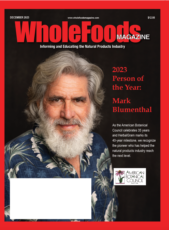In a day and age where Wendy’s, Burger King and McDonald’s commercials rule the air, one man strives to make a difference. Sid Lerner, famously known for his “Squeeze the Charmin” commercials, resurrected the idea of “Meatless Mondays.”
Lerner asks that people indulge in three meatless meals a day, just once a week. Big names like Chef Mario Batali from ABC’s The Chew jumped on board most recently, dedicating an episode to the healthy holiday. America isn’t the only nation hopping to; Beatle’s front man Paul McCartney campaigned for it across the pond as well.
Though Lerner advertised the idea in 2003, it was not an original concept. During WWI, the U.S Food Administration asked families to reduce their consumption to aid the war effort. The Agency even took it a step further, asking Americans to participate in “Wheatless Wednesdays.” It resulted in 10 million families, 7,000 hotels and 425,000 food dealers pledging to make a difference. The campaign returned during WWII, when Presidents Roosevelt and Truman used it to feed war-ravaged Europe.
Lerner doesn’t ask his followers to forget about meat, just to consume less of it. Excessive consumption of processed meats can cause higher risk of stroke, heart disease, cancer and diabetes. Americans on average eat a half a pound of meat a day, which equals 180 pounds a year. Excessive meat consumption also hurts the environment.
According to the United Nation’s Food and Agriculture Organization, the meat industry creates one-fifth of the man-made green house gas emissions. It also affects the water supply, with 2,500 gallons of water going into one single pound of beef in comparison to 220 gallons to a pound of soy tofu. We also use 20 times more fuel to make feed for beef versus plant-based protein.
When helping consumers lead healthier lives, small goals are both realistic and easier to reach. For consumers that are new to the idea of meatless meals, point them to easy substitutions. In place of chicken, beef or pork for protein, show them beans, legumes, nuts and eggs.
Also remember that people new to healthy lifestyles are not familiar with the expenses, so holding sales on Mondays will benefit both parties. Free samples are a must, since most buyers shy away from the unfamiliar. If it is introduced freely, people are more likely to buy it.
It is important for your store’s associates to have extensive knowledge of meatless menus, since most consumers aren’t “food elitists.” Instead of giving generic tips, give specific suggestions such as “Split pea soup instead of chicken soup,” or “If you love bacon bits on your salad, I recommend chopped nuts instead.” The Meatless Monday Web site (www.meatlessmonday.com) provides nutritional facts, suggestions and recipes for those daring volunteers, so always direct them to those resources as well.
Though some may argue that Meatless Monday is just a trend, there isn’t anything temporary about it. The campaign has trickled down from the elite to smaller communities, with schools, hospitals and restaurants around the country participating.
Just like some workout programs only ask for 10 minutes a day, the Meatless Monday campaign simply asks for your Monday. A concept surviving two wars and a recent recession, Meatless Mondays are a crucial stepping stone to a healthier planet and a healthier population. WF
Published in WholeFoods Magazine, March 2012









